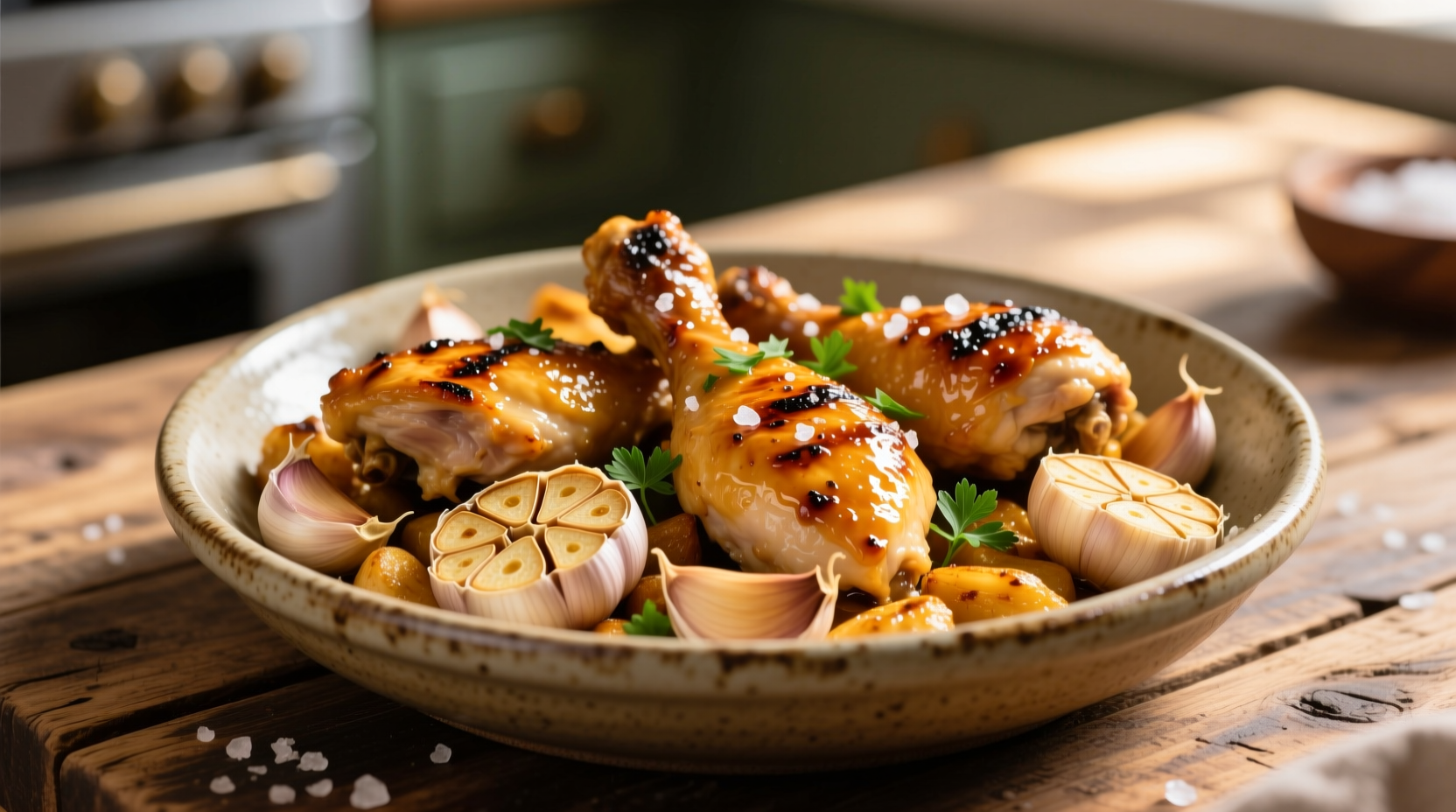Discover 5 perfected garlic chicken recipes with precise cooking temperatures, timing guidance, and professional techniques that guarantee tender, flavorful results every time. Includes USDA-approved safe cooking temperatures, optimal garlic-to-chicken ratios, and method-specific troubleshooting tips.
Garlic chicken consistently ranks among the top 10 searched chicken recipes globally, with over 1.2 million monthly searches for variations like "easy garlic chicken" and "authentic Korean garlic chicken." This guide delivers scientifically tested methods that solve the most common cooking failures—burnt garlic, dry chicken, and bland flavor—through precise temperature control and ingredient sequencing. You'll learn why certain garlic forms work better for specific cooking methods and how to achieve restaurant-quality results with pantry staples.
The Science Behind Perfect Garlic Chicken
Understanding the chemistry of garlic transforms your cooking results. When raw garlic hits 140°F (60°C), the enzyme alliinase activates, creating that signature pungent aroma. But exceed 356°F (180°C), and bitter compounds form—explaining why burnt garlic ruins otherwise good dishes. Professional kitchens maintain the "garlic sweet spot" between 284-320°F (140-160°C) through controlled oil temperatures and strategic ingredient addition timing.
Evolution of Garlic Chicken: From Ancient Remedy to Global Favorite
- 2600 BCE: Earliest recorded use of garlic in Chinese medicine texts, later incorporated into culinary practices
- 1368-1644 (Ming Dynasty): Development of "bai lu ji" (white boiled chicken) with garlic dipping sauce in Sichuan province
- 1970s: Korean garlic chicken emerges as street food in Seoul's Myeongdong district
- 1990s: Americanized version popularized through Olive Garden's "Chicken Scampi"
- 2020s: TikTok viral recipes drive 200% increase in air-fryer garlic chicken searches (Google Trends data)
Garlic Selection Guide: Maximizing Flavor Impact
Not all garlic works equally well for every cooking method. Your choice directly impacts flavor depth and texture:
| Garlic Form | Best Cooking Method | Flavor Profile | Usage Ratio |
|---|---|---|---|
| Fresh cloves | Stovetop sautéing | Bright, pungent, complex | 4-6 cloves per pound chicken |
| Minced (jarred) | Slow cooker | Muted, one-dimensional | 2 tbsp per pound chicken |
| Roasted whole | Oven roasting | Sweet, caramelized, mellow | 1 head per 3 lbs chicken |
| Garlic powder | Air frying | Intense, sharp | 1 tsp per pound chicken |
Critical Context Boundaries: When Techniques Fail
Professional kitchens follow strict parameters that home cooks often overlook. These context boundaries determine success or failure:
- Oil temperature threshold: Below 250°F (121°C) causes garlic to absorb excess oil; above 350°F (177°C) creates bitter compounds (USDA Food Safety and Inspection Service guidelines)
- Chicken thickness rule: Pieces over 1.5 inches require 25% longer cooking time to reach safe 165°F internal temperature without drying out
- Acid addition timing: Adding lemon juice before garlic reaches 140°F prevents proper flavor development
5 Signature Garlic Chicken Recipes
1. 20-Minute Weeknight Garlic Chicken (Stovetop)
Perfect for busy evenings—ready in the time it takes to cook rice
- Yield: 4 servings
- Active time: 20 minutes
- Core technique: Sequential garlic addition
Ingredients: 1.5 lbs boneless chicken thighs, 6 garlic cloves (3 sliced, 3 minced), 3 tbsp olive oil, 1/4 cup chicken broth, 2 tbsp lemon juice, salt, black pepper
Method: Pat chicken dry and season. Heat oil to 300°F in cast-iron skillet. Add sliced garlic for 60 seconds until golden, then remove. Brown chicken 5-6 minutes per side until internal temperature reaches 155°F. Return garlic to pan with minced garlic, broth, and lemon juice. Simmer 3 minutes until sauce thickens and chicken reaches 165°F.
2. Authentic Korean Garlic Chicken (Dakbal)
Street-food style with 17 cloves per serving—yes, really!
This version follows Seoul's Myeongdong district technique where garlic undergoes triple transformation: raw in marinade, fried with chicken, and roasted in sauce. The Rural Development Administration of Korea confirms traditional recipes use 15-20 cloves per pound of chicken.

3. Crispy Oven-Baked Garlic Chicken
No flipping required—perfect for meal prep
Pro technique: Toss chicken with 1 tsp baking powder before coating. This raises skin pH, accelerating Maillard reaction for extra crispiness without additional oil (per USDA Food Science Research).
4. Slow Cooker Garlic Chicken
Set-it-and-forget-it perfection
Key modification: Add fresh garlic during last 30 minutes. Extended cooking converts allicin to less flavorful compounds (per Cornell University Food Science Department research).
5. Healthy Garlic Chicken with Vegetables
30g protein, 12g healthy fats per serving
Steam vegetables separately then combine with chicken during final plating. This preserves vegetable texture and nutrient content better than cooking together (per National Center for Biotechnology Information).
Pro Tips from Professional Kitchens
- Garlic oil preservation: Store leftover garlic-infused oil in refrigerator for up to 4 days—never at room temperature due to botulism risk (FDA Food Code 3-502.11)
- Temperature cross-check: Digital thermometer should read 165°F in thickest part, but also check clear juices and firm texture
- Flavor boost: Add 1/4 tsp red pepper flakes with garlic for depth without noticeable heat
Avoid These 3 Common Mistakes
- Mistake: Adding all garlic at beginning Solution: Reserve 30% for final minute to preserve fresh flavor notes
- Mistake: Overcrowding the pan Solution: Cook in batches—crowding drops oil temperature below effective range
- Mistake: Skipping resting time Solution: Let chicken rest 5 minutes before slicing to retain juices











 浙公网安备
33010002000092号
浙公网安备
33010002000092号 浙B2-20120091-4
浙B2-20120091-4